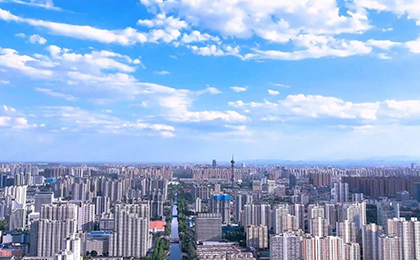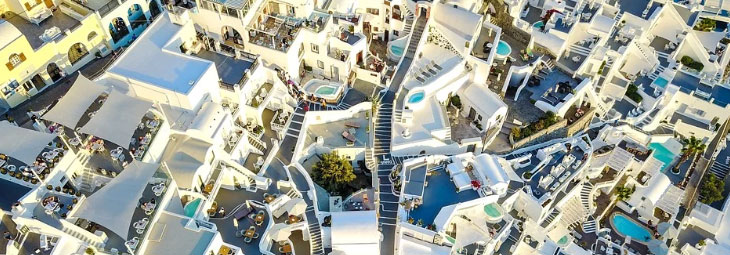


The implementation of urban renewal action is an important initiative to promote the high-quality development of cities and continuously meet the people's needs for a better life. In order to continuously promote urban renewal action, agreed by the CPC Central Committee and the State Council, the following opinions are put forward.
1. General Requirements
Focusing on changing the way of urban development and construction, establishing a sustainable mode of urban renewal, policies and regulations, and vigorously carrying out urban renewal to promote the optimization of the urban structure, promoting the optimization of urban structure, improving functions, continuing the cultural context and enhancing quality, and creating livable, resilient and intelligent cities.
In the work, we should: adhere to the people-centered approach, fully implement the concept of people's city, and build good houses, good residential compounds, good communities, and good urban areas; adhere to the system concept, respect the laws of urban development, establish the awareness of full-cycle management, and continuously enhance the systematic, holistic, and coordinated nature of the city; adhere to the leading role of planning, give full play to the strategic steering function of development planning, strengthen the fundamental role of territorial spatial planning, and enhance the role of special planning; adhere to integrating development and safety, preventing and responding to risks and challenges in urban operation, and comprehensively improving the resilience of the city; adhere to preservation as the top priority and ensure comprehensive protection of all eligible items, advancing utilization-driven preservation, and strengthen the protection of urban cultural heritage in the whole process and in all segments of the urban renewal process; adhere to the principle of evidence-based approaches and context-specific measures, balancing ambition with feasibility to avoid vanity projects that waste resources and burden citizens.
The main objectives are: by 2030, significant progress will have been made in the implementation of urban renewal actions, the institutional mechanism for urban renewal will be continuously improved, the transformation of urban development and construction methods will have begun to bear fruit, the foundation for safe development will be stronger, the effectiveness of services will continue to be improved, the living environment will be markedly improved, the economic structures will be more diverse, the cultural heritage will be effectively protected, and the distinct visual identity is more pronounced, and the city will become a space for high-quality life for the people.
2. Main tasks
2.1 Strengthening the transformation and utilization of existing buildings.
Steadily push forward the renovation of structurally unsound buildings, accelerate the demolition and renovation of Class D structurally unsound buildings, and actively and steadily implement the renovation of Class C structurally unsound buildings on state-owned land and non-self-contained housing units for state-owned enterprises and public institutions through a variety of methods such as reinforcement, alteration and reconstruction. Carry out seismic reinforcement on urban houses that have potential seismic safety hazards and are of value for reinforcement by phased and categorized approach. Involving immovable cultural relics, historical buildings and other objects of protection, they should be maintained and used in accordance with the relevant laws and regulations, and “one house, one policy” is proposed for the renovation of the program, and it is strictly prohibited to demolish and renovate historic and cultural districts, traditional villages, cultural relics, and historical buildings under the pretext of hazardous buildings. Continuously promote the energy-saving renovation of existing residential buildings and public buildings, strengthen the management of building insulation materials, and encourage residents to carry out interior decoration of urban housing. Strengthen the transformation and utilization of old factory buildings, inefficient buildings, traditional commercial facilities and other existing building stock, promote the conversion of building functions and mixed utilization, and reasonably convert land use according to the dominant functions of buildings in accordance with the law.
2.2 Promoting the improvement and transformation of old residential compounds.
Renew and reconstruct of gas and other aging pipelines in residential compounds, rectify building walkways, exhaust flues, ventilation shafts, etc., to eliminate potential safety hazards, and support for the installation of elevators in technically feasible buildings. Rectify the residential compounds and the surrounding environment, improve the parking, EV charging, fire safety and telecom utilities, and add public service facilities such as meal assistance and homecare support. Strengthen the quality and safety supervision of the transformation of old residential compounds, and enforce the responsibility among all participating entities. Improve the long-term management mechanism of the residential compounds in conjunction with the renovation, focusing on guiding residents to participate in and supervise, and collectively sustain the upgrading outcomes. Coordinate the implementation of the transformation of old residential compounds and structurally unsound buildings, and formulate a comprehensive protection, repair and transformation plan based on the excavation of cultural heritage values and the protection of traditional features, so as to continuously improve the living environment, facility conditions, service functions and cultural values of old residential compounds.
2.3 Carrying out the construction of complete communities.
Improve basic public service facilities, convenient commercial service facilities and public activity venues in communities, build safe, healthy, well-equipped and well-managed complete communities, and build 15-minute community life circles. Carry out the construction of embedded service facilities in urban communities, make up for the shortcomings of public service facilities according to local conditions, and optimize the layout of comprehensive service facilities. Guide residents, planners and designers to participate in community construction.
Source: https://www.gov.cn/zhengce/202505/content_7023882.htm
Editor & Translator: Yin Dou